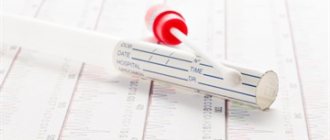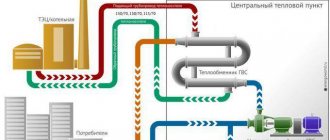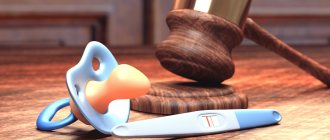A DNA paternity test is the most reliable way to determine. whether there is a biological relationship between people. Genetic analysis allows you to either 100% refute family ties, or prove paternity to 99.9% or higher.
Acknowledgment of paternity is a legal term. It means establishing the biological origin of a child from a specific man. The legislation provides the opportunity to conduct genetic paternity testing, which determines blood relationship as between father and child, and in some cases between mother and child.
Establishing paternity allows you to solve the following problems:
- Removing doubts during surrogacy.
- Determination of relationship with a child in case of intentional or accidental substitution in the maternity hospital.
- Confirmation of the fact of kinship for receiving or refusing an inheritance.
- Determination of the child's biological father, who is unknown.
- Determination of family ties for receiving or refusing alimony.
- Confirmation of paternity or maternity for trial.
- Relocation of mother and child to the native country of the father, who has the citizenship of another state.
Areas of application
Forensic scientists were the first to appreciate all the advantages of the then young and undeveloped DNA testing technique. And, this was not without a coincidence. The discovery of DNA identification, similar to fingerprint identification, was discovered by British scientist Alec Jeffreys on September 10, 1984. He was studying abnormalities in chromosomal DNA using X-rays, and noticed that nucleotides have a unique sequence and it differs for everyone.
The discovery gave rise to the variety of applications of DNA analysis that exist today - we can observe how incredible technology from science fiction becomes everyday reality. It's surprising that Alec Jeffries never won a Nobel Prize. He still lives in the UK and is 69 years old.
These days, with a DNA test you can:
- Establish a person’s identity by his smallest traces: by the glass from which he drank; a drop of blood dried on a shirt, etc.
- Establish paternity.
- Establish relationship and its degree between an unlimited number of people (without studying the DNA of fathers and mothers).
- Identify an infection or virus before the first symptoms of the disease appear.
- Create a diet that is most suitable for the body, based on its innate individual characteristics.
- Predict predisposition and contraindications to sports and physical activity.
- Find out whether there are traces of hereditary diseases and predisposition to them in the genome.
- Find out the sex of the child even before his birth, as well as the Rh factor and genetic failures (if any).
And this is only from the range of possible applications available to the general public. In the future, genetic scientists hope to find the secret, if not of eternal life, then to develop a method to extend it many times over.
How to do a DNA paternity test to achieve 100% accuracy?
No way. It is impossible to establish paternity 100%. That's why:
- According to the theory of probability, there is a chance that in one case out of a billion, DNA paternity (the loci under study) will coincide in two random people. Therefore, no one can give 100% confirmation.
- Genes can mutate. A father may have a DYS391 marker of 9, while a daughter may have an 8. For this reason, 1-2 markers may not match. If the difference reaches 3, then paternity can be completely excluded.
Honest Laboratory performs DNA paternity testing with 99.999% accuracy. This is a high indicator for information analysis. The results can also be used in court.
Materials for analysis
It is possible to isolate a deoxyribonucleic acid molecule from almost any sample of human tissues and fluids. Due to the ease of use at home, the most widely used method is the extraction of DNA from the saliva of a subject. In order to independently collect saliva for analysis with a cotton swab, you do not need special skills and knowledge. It is enough to maintain cleanliness and hygiene. Immediately before taking the sample, it is advisable not to eat for 2-3 hours. It is also better to drink in moderation, one or two sips and only water.
The following are suitable for analysis: nail clippings, hair, cigarette butts, chewing gum, stains of bodily fluids on fabric, etc.
Advantages of the Honest expert bureau
- Conducting genetic examinations of all types. DNA testing does not require blood sampling. You can use nail clippings, cigarette filters, saliva, a pacifier, a toothbrush, etc. as samples.
- Complete confidentiality. The identity of each client and the results of the examination are completely anonymous. Only those who the customer wants to tell will be able to know about this.
- High reliability of results. The accuracy of the results reaches 99.999%. Colored phoregrams are attached to the expert opinion.
Procedure
DNA tests are very diverse, but the procedure for carrying them out follows the same principle. There is a common chain of events that not all tests pass: for example, to detect the presence of viruses and infection in a sample, there is no need to sequence DNA, but rather identifying one foreign molecule in the sample is sufficient.
The most complex and expensive tests, which cover the entire research process, consist of the following operating steps:
- Collection and receipt by the laboratory of a biospecimen for research.
- Isolation of cells from a sample and their synthesis by polymerase chain reaction. At this stage, the number of deoxyribonucleic acid molecules required for testing is created.
- Sequencing is the determination of the gene sequence in a DNA molecule.
- The areas of genes required for research are tinted with fluorescent dye.
- The tinted gene regions are exposed to a targeted laser beam, allowing precise visualization and examination.
- Decoding the received data and writing medical recommendations.
Challenging the examination in court
If you do not agree with the expert opinion, you have the right to submit a request to have the analysis repeated at another institution. During the study, different biomaterials are taken: if the disputed examination was done on saliva, then the next one will be carried out on blood.
If the court rejects the petition, you will have to challenge the refusal through a higher authority.
Application form
A request to order a re-examination must contain the following information:
- address and name of the court;
- case number;
- information about the participants in the proceedings: full name, passport details, addresses;
- details of the previously obtained expert opinion, results;
- a request to order a repeat study with or without indicating a specific organization;
- inventory of documents, date and signature.
Decoding the received data
Decoding the data involves painstakingly comparing the position of genes and their shape with a database of standards. This reveals how a gene behaves and what consequences its individual activity and activity in conjunction with other genes leads to.
Transcription takes longer than other stages of analysis.
Diagnosis of diseases
Probably the most useful and promising area of genetic research for people is the diagnosis of diseases in the early stages, and even earlier. Today testing allows:
- Identify variable genes. This is when the person himself is not susceptible to the disease, but can pass it on to the next generation.
- Determine cell wear and tear - cellular aging. The main factor that affects the ability of a cell to divide is the length of the telomeres inside it. With each subsequent division, the telomeres become a little shorter, and so on until the cell loses the ability to divide. There are ways that allow you to lengthen telomeres and thereby prolong your youth.
- Conduct an analysis of your general health to create an individual diet and exercise schedule. Testing allows you to identify allergens and contraindications.
- Identify predisposition to the most dangerous and common disease of the millennium, and carry out preventive measures.
Kinship
The most popular DNA test among ordinary people is paternity testing. It is not uncommon for single mothers to resort to him in order to bring their father to justice and force him to pay child support. It happens that a positive research result gives the right to claim an inheritance.
But the research possibilities are not limited to this:
- Sibling test - allows you to identify the relationship and its degree (direct, first cousin, second cousin, etc.) between potential brothers and sisters. Testing often touches on subtle issues of family relationships and forbidden connections.
- An indirect paternity test, or genetic reconstruction, allows one to identify family ties from the side of the father, without the father himself.
- Establishment of Paternity. Sometimes, if circumstances require it, then motherhood.
- And even tests for twins that reveal which twins are heterozygous or monozygous. This can be important, for example, when deciding on organ donation.
Genetic examination
DNA personality testing is an almost 100% way to determine a person’s identity based on the smallest biosamples of his tissues and physiological fluids. Most often, this is necessary in forensic science to identify all participants in the tragedy, to determine the identity of the alleged killer, or the victim, if it is not possible to determine the identity in any other way. It happens that due to injuries or illnesses, a person can lose orientation and forget where he lives and what his name is - in such cases, DNA analysis allows us to determine who it is and find relatives of this person.
Is it possible to undergo genetic testing anonymously?
If the interested person does not want publicity, he has the right to anonymous research. In this case, instead of the standard data: last name, first name and patronymic, a special number is indicated. The clinic staff does not have the right to inform anyone about who underwent the study under this number, as well as its results.
Dear readers! To solve your problem right now, get a free consultation
— contact the on-duty lawyer in the online chat on the right or call:
+7
— Moscow and region.
+7
— St. Petersburg and region.
8
- Other regions of the Russian Federation
You will not need to waste your time and nerves
- an experienced lawyer will take care of solving all your problems!
Cost
The cost of testing, as well as its timing, can vary significantly from several thousand rubles for the simplest testing to tens of thousands for a full-fledged in-depth DNA analysis. The price of the study depends on the pricing policy of the laboratory and its success, on whether the clinic has its own laboratory, and on the volume of the required study. The greatest cost in conducting an analysis is the reagents necessary to identify genes and decipher them - accordingly, the more genes that need to be deciphered, the more expensive the entire study will be and the more time it will take.
DNA paternity test
Thanks to DNA analysis, it is possible to determine whether a person is the father/mother of a particular child. Typically, this test is performed on saliva, but non-standard materials can be used, which include nails, hair, earwax and other materials containing DNA.
At the Honest Bureau you can order a DNA paternity test for the following types:
- Anonymous. In this case, the examination participants may not provide their passport data. You can collect materials for analysis yourself, and then deliver them to the office. Such a DNA paternity test has no legal force.
- Informational. A passport or birth certificate is required for testing. For examination, participants must come to the office where the material will be collected. Its results have legal force.
Regulations by law
Determination of paternity and related rights and obligations are regulated by the Family and Civil Procedure Code:
- Articles 47-52 of the Family Code provide for the possibility of presenting any evidence when identifying the child’s father.
- Article 86 (part 3) of the civil procedural legislation assigns an important role to DNA testing and analysis of genetic material in proving paternity in controversial situations.
- Article 67 of the Code of Civil Procedure determines the priority of a court decision when establishing the father of a child.
In paragraph 2 of Article 52 of the RF IC there is an important remark that it is impossible to challenge paternity when proving that the man knew that he was not a blood relative.
Download the Application Form for establishing paternity by court decision (278.2 KiB, 285 hits)
How is biomaterial delivered?
The test requires biomaterial samples from both the alleged father and the child. A DNA sample from the mother may also be required to eliminate the possibility of random matches and thus increase the accuracy of the analysis. Suitable biomaterials include saliva, blood, semen, nails, hair, toothbrush, chewing gum, cigarette butts, and even earwax. DNA is found in almost all cells of our body. The simplest and most common option is a sample of buccal epithelium, that is, cells of the mucous membrane of the inner surface of the cheek. To do this, you just need to move a cotton swab in your mouth for 10 seconds.
In some cases, laboratories offer a service such as remote sampling of biomaterial. In this way, residents of settlements that do not have laboratories can conduct the test. On the laboratory’s website, the client orders a kit for taking samples of biomaterial for DNA analysis, and it also describes in detail how to correctly collect the sample. The person seals the cotton swabs and mails them back to the laboratory. In this case, it is very important to be careful and never touch the sticks with your bare hands. This may affect the accuracy of the analysis. Of course, the result of a “home test” will not have any legal force.
Forced determination through court
When a couple cannot agree on a peaceful settlement, and the mother is faced with the need to collect financial support for the child, paternity can only be established by a court decision, i.e. forcibly, regardless of the position of the intended parent.
The action plan describes the steps to determine the father and recognize his status in court:
- Preparation for trial and collection of evidence. The mother gives an explanation of the situation: details of the acquaintance, the degree of closeness of the relationship and prospects at the time of close communication and contacts with the defendant).
- Bringing testimony proving the existence of a close relationship between the plaintiff and the potential parent (neighbors, relatives, friends, colleagues are involved).
- Preparation of a statement of claim with the attachment of documentary evidence prepared in advance (this can be SMS correspondence, mail, photographs, video materials at the time of pregnancy, gestation and the birth period). The court will accept as evidence and records the words of a paternity candidate claiming to be the father.
- During the proceedings, the judge orders a DNA examination, on the basis of which a decision will be made to determine the status of the defendant.
Features of a claim for recognition of paternity after a DKN examination
The mother applies to the district court, choosing the instance at her place of residence or the address of the defendant.
The application is drawn up in accordance with the norms of the Civil Procedure Code, the requirements imposed by the court, and must contain the following information:
- Information about the parties to the process (plaintiff, defendant).
- The main part contains a description of the circumstances that led to the need to determine the father, with references to documents proving the fact of close ties with the defendant.
- After listing the evidence, the plaintiff formulates a demand to recognize a specific citizen as the father of her child.
If the mother is against
The examination is not always initiated by the child’s parent. The father will face a similar legal procedure if the mother is against genetic research. This right is enshrined in Art. 52 of the RF IC, establishing equal rights to challenge records of parents.
A man who intends to confirm or deny his paternity writes a statement of claim indicating the circumstances that led to the need to establish paternity. After hearing the parties, the court makes a decision to force an examination, and if the child’s mother refuses, the judge has the right to satisfy the plaintiff’s demands by recognizing his paternity.
It should be taken into account that the results of the study of genetic material are not the only evidence - the court must consider other documentary evidence of the existence of a relationship, including testimony of other persons.
At what age can the test be done?
It is possible to take an analysis of DNA molecules not only from a newborn baby, but even from a child in the womb, starting from the ninth week of pregnancy. This was possible 10 years ago, but then the amniocentesis procedure was performed. The woman's abdominal wall and uterus were punctured to obtain a sample of amniotic fluid. Nowadays, everything has become simpler: laboratories can isolate a child’s DNA from the mother’s blood. A pregnant woman just needs to take a blood test from a vein. Not all laboratories carry out such a test, since the result may be decisive for saving the baby’s life.
Since DNA does not change during life, there are no age restrictions. Some men in old age check their kinship with their already graying children.
Participants in brother-sister analysis
Required: brother/sister and brother/sister. It is necessary to provide information on what kind of relationship we are testing for - natural (two common parents) or step (one common parent). Optional: mother, another brother/sister (you must indicate which of the brothers/sisters you are comparing with).
In this analysis, the participation of the mother, or mothers if they are different, is recommended for higher accuracy. If it is necessary to determine whether brothers have a common father, Y-chromosome testing is recommended, which gives a definitive result of either 0% or 99.9+% probability. The mother's participation is not necessary.
If it is necessary to determine whether sisters have a common father, it is recommended to compare the X chromosome, which gives a final result of either 0% or 99.9+% probability. The mother's participation is not necessary.
If it is necessary to establish the relationship with maximum precision, and there are additional relatives of the putative father, genetic reconstruction is recommended.
Why do this test
Today in Russia there are many laboratories offering DNA testing, including paternity determination. There are two options here: either people do the examination “for personal use”, or it is ordered by the court. In the first case, it is enough to choose a laboratory, familiarize yourself with all the nuances, submit a biomaterial (most often a swab from the mouth), pay for the test and wait for the result. If the examination is ordered by the court, then we are most likely talking about alimony or inheritance. Such an examination is carried out under a number of conditions, for example, the collection of biomaterial must be carried out in the presence of witnesses. The results of such analysis will have legal force.
According to Russian laws, if the child’s father does not recognize him and refuses the examination ordered by the court, in the vast majority of cases he will be recognized as the father. If a woman seeks this examination, she will have to pay for it. If paternity is confirmed, then these expenses will be recovered from the father.
Terms of payment
We provide convenient conditions for our clients:
- The material can be taken with ordinary sticks or purchased a DNA test kit
- Agreement.
- Staged payment. The first part is paid after we receive the samples, the second - when the result is ready.
- Payment can be made in cash at our center, through any bank and by credit card on the website.
- The result will be provided at your request: in person, by phone, by email, by registered mail, or by courier service.
| Sample brother-sister analysis agreement |
| Payment details |








